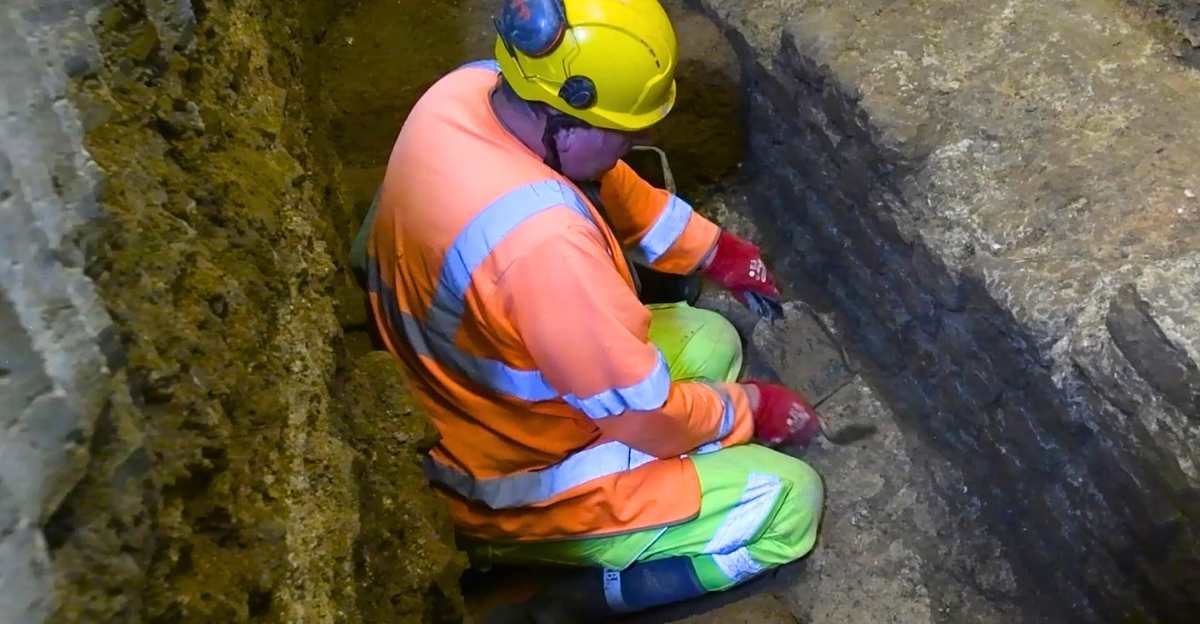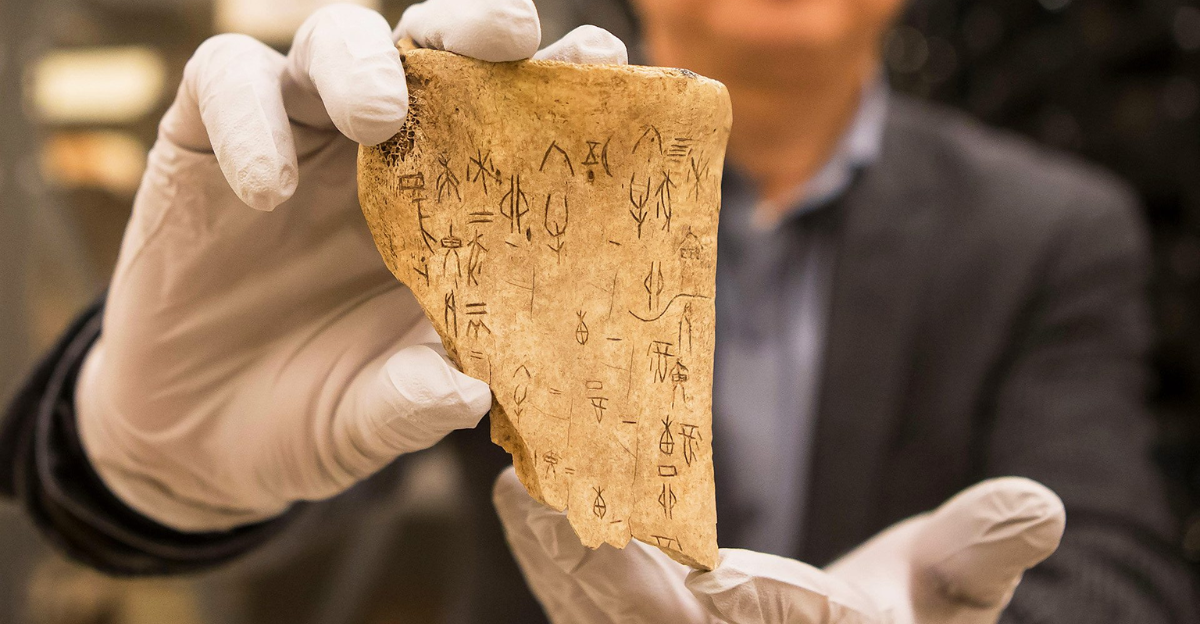
Imagine footprints so ancient that they have the power to rewrite the entire story of humanity’s arrival in the Americas. For years, scholars and textbooks have told us a timeline of when the first humans set foot on this continent. But what if that timeline is just the beginning of a much deeper and more complex story? These newly discovered footprints in a remote part of New Mexico hint at a past far older than we ever imagined.
This discovery challenges the foundation of what we know about human migration and settlement in the New World. It invites us to rethink our history and consider that the first Americans may have been here tens of thousands of years earlier than previously believed. The mystery of these footprints is just unfolding, promising to reshape our understanding of human origins in the Americas.
Why This Discovery Matters to You

This discovery is not just an academic curiosity; it strikes the heart of history beneath our feet, especially in places like New Mexico and the broader American Southwest. White Sands National Park, where the footprints were found, is a familiar and cherished landscape for many. Beneath the surface of these lands lie secrets that could dramatically change our understanding of who came here first and when.
This evidence suggests that ancient humans lived, traveled, and thrived in this region long before anyone thought possible. It raises a compelling question: could your backyard hold similar clues waiting to be uncovered? The implications extend beyond archaeology; they touch on cultural identity, heritage, and how we connect with the land’s deep past. This discovery invites all of us to look closer at the places we call home.
What We Thought We Knew

For decades, the accepted story was that humans first crossed the Americas roughly 15,000 years ago, following the retreat of massive glaciers after the last Ice Age. This timeline was widely taught in schools and shaped our understanding of the peopling of the New World. It is suggested that early humans migrated from Siberia across the Bering Land Bridge into Alaska and then spread southward as the ice sheets melted.
This narrative became a cornerstone of archaeological and anthropological study, influencing how we viewed early American history and human adaptation. It also helped define cultural heritage for many Indigenous peoples and descendants of early settlers. But as discoveries emerge, this timeline is being questioned. The story of the first Americans is proving to be more complex, with evidence suggesting humans may have arrived much earlier than the 15,000-year mark.
The Ice Age Barrier

The dominant theory held that thick ice sheets, covering much of North America during the Last Glacial Maximum, acted as nearly impenetrable barriers to human migration. These massive glaciers were thought to block all but the most difficult routes, making it impossible for humans to enter the continent until the ice began to retreat around 15,000 years ago. This idea shaped decades of research and guided archaeological exploration. The ice sheets were seen as natural boundaries, defining when and where humans could travel and settle.
However, the newly discovered footprints challenge this assumption. They suggest that humans were present during the height of the Ice Age, when glaciers were at their peak. Early humans may have found ways to survive and move through harsh, icy landscapes previously considered uninhabitable. The discovery forces scientists to rethink the resilience and adaptability of these ancient populations.
The Game-Changing Footprints

At White Sands National Park in New Mexico, scientists uncovered fossilized human footprints preserved in ancient lakebed mud. Radiocarbon dating of these footprints places them between 21,000 and 23,000 years old, roughly 10,000 years earlier than the previously accepted timeline for human arrival in the Americas. This discovery is groundbreaking because it places humans in North America during the Last Glacial Maximum, when glaciers covered large portions of the continent.
The footprints include impressions from adults, children, and pregnant women, indicating a diverse group of people living and traveling together. This evidence dramatically pushes back the timeline of human presence and suggests that early humans were able to survive in challenging Ice Age environments. The footprints are a direct, tangible link to our ancient ancestors, offering a glimpse into their lives and movements thousands of years earlier than we ever imagined.
Life in the Ancient Southwest

The footprints at White Sands reveal more than presence; they tell a life story. Preserved in the mud of an ancient lakebed, these footprints include those of adults, children, and mothers, indicating that entire families lived and moved through this landscape. This suggests that humans were not just passing through but had established a way of life in the American Southwest during the Ice Age. The presence of children and pregnant women indicates a stable, thriving community capable of enduring harsh climatic conditions.
These findings challenge previous assumptions that the region was uninhabitable during the Last Glacial Maximum. Instead, they reveal that early humans adapted to and thrived in diverse environments far earlier than previously thought. This new perspective enriches our understanding of prehistoric life and highlights the resilience and ingenuity of our ancestors.
Overcoming Scientific Skepticism

The dating of these footprints was met with skepticism within the scientific community, mainly because initial radiocarbon tests relied on aquatic plants, which can yield inaccurate ages. To address these concerns, researchers employed advanced dating techniques, including radiocarbon analysis of the actual lakebed mud and pollen grains and optically stimulated luminescence dating of quartz grains. Multiple independent laboratories confirmed the footprints’ age, providing robust evidence that supports the earlier timeline.
This rigorous scientific process highlights the challenges researchers face when overturning established theories. Confirming the footprints’ age represents a triumph of careful methodology and interdisciplinary collaboration. It underscores the importance of questioning assumptions and refining our understanding of human history through new evidence and improved technology.
Challenging Migration Theories

This discovery directly challenges the long-standing theory that humans only entered the Americas after the Bering Land Bridge became accessible around 15,000 years ago. The presence of humans in New Mexico 21,000 to 23,000 years ago suggests that migration routes were more complex and varied than previously believed. It raises questions about how early humans traveled, survived, and adapted to Ice Age conditions.
Archaeologists must now reconsider the possibility of earlier coastal or interior routes that allowed humans to bypass or navigate around massive glaciers. This finding adds to a growing body of evidence that human migration into the Americas was not a single, linear event but a multifaceted process involving multiple waves and pathways. It opens new avenues for research and exploration into the origins and movements of the first Americans.
A New Pattern of Early Migration

Along with other recent discoveries across the Americas, the White Sands footprints contribute to a larger emerging picture of early human migration and adaptation during the Ice Age. These findings suggest that early humans were highly adaptable, capable of surviving in diverse and challenging environments.
The footprints and archaeological sites in South America and other parts of North America indicate a complex pattern of migration rather than a simple, single-route movement. This challenges older models that portrayed early human migration as slow and limited by environmental barriers. Instead, the evidence points to sophisticated survival strategies, social structures, and mobility. This evolving understanding reshapes how we view prehistoric life, highlighting the resilience and ingenuity of early humans in the face of climatic extremes.
What Stories Lie Beneath Our Feet?

The discovery of these ancient footprints opens a new chapter in human history. It invites us to wonder: What other secrets lie buried beneath the earth, waiting to challenge our current understanding? As scientific methods improve and exploration continues, future discoveries may further reshape the timeline and narrative of human migration and settlement.
These footprints remind us that history is not fixed but constantly evolving with new evidence. They encourage curiosity and reflection about our shared past and the journeys of our ancestors. What other ancient stories remain hidden, waiting to be uncovered? This discovery inspires scientists and the public to look deeper and stay open to surprises to understand humanity’s origins.






